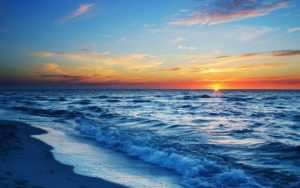chemist
MAOU "Vadskaya SOSH", village of Vad Nizhny Novgorod region.
Purpose:
- generalization of students' knowledge in the section "Organic chemistry";
- popularization of knowledge about organic chemists, patriotic education of students through the study and understanding of the scientific heritage of A. M. Butlerov.
The quiz can be used not only after school hours, but also in chemistry classes to update the knowledge of students in the study of organic chemistry in grades 9, 10.
Chemistry quiz "The Amazing World of Organic Chemistry"
1. Organic chemistry was originally called the chemistry of substances obtained from the organisms of plants and animals. With such substances, mankind was familiar with ancient times. People were able to get vinegar from sour wine, and essential oils from plants, extract sugar from sugar cane, extract natural dyes from the organisms of plants and animals.
And the term "organic chemistry" was introduced by this scientist in 1806. Name the scientist.
2. According to the provisions of this doctrine, organic substances can be formed only in living organisms, since this force exists only in living organisms.
What is this force called? Name the teaching and the founder of this teaching.
3. The decisive role in the creation of the theory of the structure of organic compounds belongs to this great Russian scientist, who on September 19, 1861, at the Congress of German natural scientists and doctors, published it in his report “On the chemical structure of matter”. Name the scientist.
4. This Russian chemist, a student of V.V. Markovnikov, according to E.D. Zelinsky conducted reactions of nitration of alkanes "revived the chemical dead," which at that time was considered paraffin hydrocarbons (alkanes). Name the scientist.
5. In 1926, a competition was announced in Russia for the creation of industrial methods for the production of this substance. S.V. Lebedev won this competition. The jury decided to immediately organize large-scale production of this substance.
Chemists and technologists of many countries of the world regarded this success as a miracle, which they believed only when, having visited in 1933-1934 in Voronezh, Leningrad, with their own eyes saw the first factories producing this substance.
Name the reaction and the substance that served as the raw material for the chemical compound announced in the competition.
6. He found that acetylene, stirred with water and mercury bromide, gives aldehyde even at normal temperatures. This reaction was common to hydrocarbons of the whole acetylene series. To carry out this reaction, the scientist studied the catalytic effect of not only bromide, but also other mercury compounds.
The reaction he opened bears his name. In 1910, the first patent for the use of this discovery was acquired by England, and in Russia it became popular only in 1920.
Say the scientist's name. What exactly is the reaction?
7. The rule bearing the name of this scientist is strictly observed only when the halogenated hydrocarbons are attached to alkenes by an ionic mechanism. If the reaction follows a radical mechanism (for example, in the presence of peroxide compounds), the order of attachment may be reversed. This exception was established by M. Harash (1933) and called the Harash effect.
What rule are we talking about? Who authored this rule? What substances are attached to alkenes according to this rule?
8. This substance, called carbolic acid, is used for disinfection.
9. This colorless gas with a sharp suffocating smell dissolves well in water. Its 30-40% solution prevents the development of bacteria and slows down the processes of decay, so various anatomical preparations are placed in it. What is the name of this gas and its water solution?
10. This gas was first isolated in 1836 by Edmund Davy during the decomposition of potassium carbide by water. Davy called this gas "a new gaseous bicarbon hydrogen."
When burning this gas in oxygen develops a very high temperature (about 3000 degrees), so it is widely used for autogenic welding and metal cutting. Currently, the starting raw materials for its production are calcium carbide and methane. What is this gas currently called?
11. This alcohol is a neurovascular poison. When 5-10 ml of this substance enters the body, vision paralysis occurs due to damage to the optic nerve, a dose of 30 ml or more causes death. It is an excellent solvent, raw material in organic synthesis, it is added to motor fuel to increase the octane number of gasoline. What's the name of this alcohol?
12. This acid was first isolated in 1671 by the English naturalist John Ray from the caustic secretions of these forest dwellers, which explains its name.
Name the acid (trivial and international name). Where else in nature can you find this acid?
13. The heroes of Jules Verne’s novel “Children of Captain Grant” were just going to have dinner with the meat of a wild lama (guanaco) shot by them, when it suddenly turned out that it was completely edible. "Maybe it was too long?" one of them asked puzzled. “No, unfortunately, it ran too long!” replied the scientist-geographer Paganel “Guanaco meat tastes only when the animal is killed during rest, but if it is long to hunt and the animal has run for a long time, then its meat is inedible.”
It was this acid that made the meat of an animal shot by the heroes of Jules Verne tasteless. Name the acid and the process by which it is formed.
14. The first reliable information about this substance was reported in 1738 by the French scientist Charles La Cardamine, who visited South America as part of an expedition. He wrote: On the banks of the Amazon River, a tree grows, called by the locals "geve", which from the incisions of the bark secretes white milky juice. Locals call this juice “tree tears”. Name the substance.
15. The structure of this substance was discovered by the German chemist F. Kekule in a dream. He saw long linear chains of atoms: chains moving, often coming together, writhing like snakes. "But what is it? One of the serpents grabbed its own tail, and the figure turned mockingly before his eyes. Awakened like a flash of lightning, I spent the rest of the night working out the implications of the new hypothesis.” What substance did F. Kekule discover in a dream?
16. In 1714, by decree of Peter I, a pharmacy garden was laid in St. Petersburg. There they grew medicinal plants, supplying them to pharmacies or processing them for medicines. So, the leaves of one of these plants, placed in the milk, protect it from souring. Fresh meat and fish planted with this plant last longer. From fibers, you can make nets that do not rot in water. The leaves are an inexhaustible basis for the imagination of the hostess to prepare healthy and healthy food. We know this plant from Andersen's fairy tale. But personal experience with this plant can bring to tears. Name the plant and the acid contained in the leaves of this plant.
17. Cranberries and lingonberries can be stored fresh for a long time without sugar. And all thanks to the fact that they contain this acid, which is an excellent preservative.
18. These organic substances perform many different functions in the cell and body. One of them is the source of the so-called endogenous water: when 100 g of this organic substance is oxidized, 107 ml of water is released. Thanks to this water, there are many desert animals, such as gerbils, squirrels.
{module Google_kvadrat|none}
Answers:
1. Johns Jacob Berzelius.
2. "vis vitalis" (vital force). Vitalism. Johns Jacob Berzelius
3. Alexander Mikhailovich Butlerov.
4. Mikhail Ivanovich Konovalov.
5. Synthesis of Lebedev (simultaneous dehydration and dehydration of ethanol).
6. Reaction of hydration of acetylene and its homologues (Kucherov reaction).
7. Markovnikov's rule: when halogen or water is attached to asymmetric alkenes, hydrogen is attached at the place of double bond to the most hydrogenated carbon atom.
8. Phenol.
9. Formaldehyde. Formalin.
10. Acetylene, ethin.
11. Methyl alcohol or methanol.
12. Formic (methanoic) acid. In nature, formic acid is found in needles, fruits, caustic secretions of bees and ants.
13. Lactic acid. glycolysis
14. Rubber.
15. F. Kekule discovered a benzene ring in his dream.
16. Nettle. Formic acid.
17. Benzoic acid.
18. Fats.
Literature:
1. Interesting tasks and effective experiments in chemistry / B.D. Stepin, L.Y. Alikberova. Drofa, 2002.
2. Training manual Name reactions in organic chemistry. 10-11th grade. / Emelyanova E.O. – M: Ventana-Graf, 2010
3. Encyclopedia for Children, Chemistry, Vol 17, Volodin V.A., 2000.
Internet resources:
https://him.1september.ru/2000/38/no38_1.htm
https://ru.wikipedia.org/wiki/%D0%9C%D1%83%D1%80%D0%D0%D0%D0%D0%D0%D0%D2%D1%8C%D0%
B8%D0%BD%D0%B0%D1%8F_%D0%BA%D0%B8%D1%81%D0%BBD%D0%BD%D0%BD%D0%BD%D1%82%D0%B
https://www.chemstudy.ru/chemistry-180-1.html
In addition:Download clipart chemical on a transparent background.






